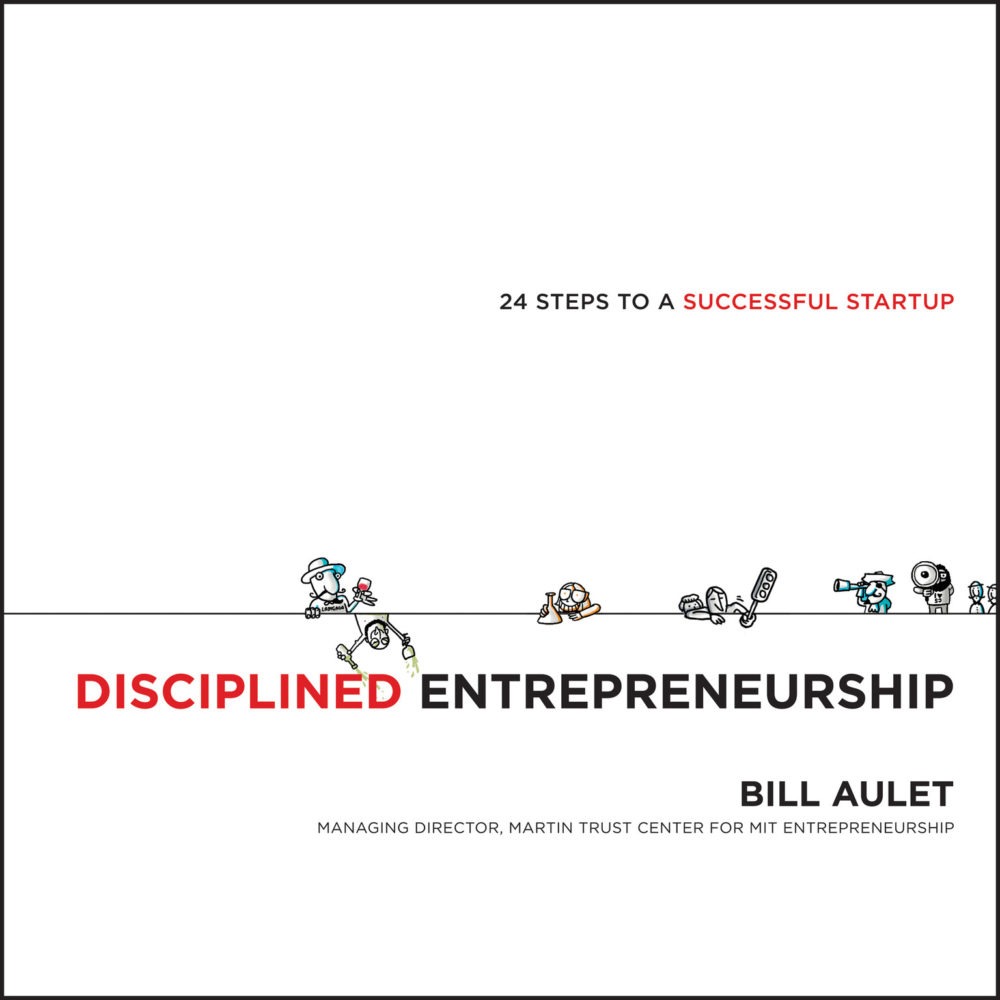
What is it?
Aulet’s Disciplined Entrepreneurship presents a 24-step journey to launching a new product or service through an ‘innovation-driven entrepreneurship’ process. He aims to demystify entrepreneurship by laying out a clear structure for budding entrepreneurs to follow, from understanding your customer and what you can do for them through to designing and building your product and scaling your business.
Who is it for?
While probably most useful for first-time entrepreneurs looking for a guide book to support their development, this book could also provide a checklist for experienced entrepreneurs, angel investors or people working at incubators.
How does it work?
The steps included are clearly laid out and segmented to support planning and execution of the process by teams of any size. Aulet also describes the reason the step is necessary, before explaining in detail how to go carry out the step.
As an example, Step 1 is ‘Market Segmentation’: Aulet explains the challenges associated with targeting the whole market with a new product (e.g. waterproof sheeting could be used for clothing, tents and wipe-clean toys), and the likely outcome – overreach and failure before you even get to market. He goes on to give a clear set of instructions for market segmentation:
- Brainstorm all market opportunities
- Narrow your focus (based on a set of questions supplied)
- Conduct primary market research to find the best opportunity
He gives an idea of how long you should spend on this stage, and quant around size of the market you’d be looking for. He ends each chapter with an example from a real company, showing how this process has been put into practice before.
Is it any good?
Clearly, no one process guarantees success of every new venture, but the set of steps identified in this book would lead to a solid, clearly defined, evidence-based offering that a team or individual could have confidence taking to market or to potential investors. It allows multiple opportunities for reflection and to pivot, meaning budding entrepreneurs will not spend thousands of pounds of their own (or borrowed) money on a product that will have little chance of success.
At ~270 hardbacked pages, it’s not the easiest book to carry around, and if you want something that will slip in your pocket for reading on a plane this isn’t the book for you (although it is available as an ebook). It’s also written for the American market, but the structure is equally applicable for any European business (and could probably apply globally). Finally, 24 steps could be a little daunting, but by approaching the six ‘themes’ separately, teams could avoid being overwhelmed.
This book would be a great resource if you (or your team) is looking to develop or spin out an idea and are looking for a place to start or a structure to support project management. It is clearly written and easy to follow.
If you are following a process like this, and would like support around market segmentation, identifying a beachhead market, calculating market sizes, mapping sales processes, testing assumptions or developing business plans, these are all things we regularly support our clients with.
Get in touch if you’d like to find out more!
Blog author:

Jon Turpin,
Project Team Leader


